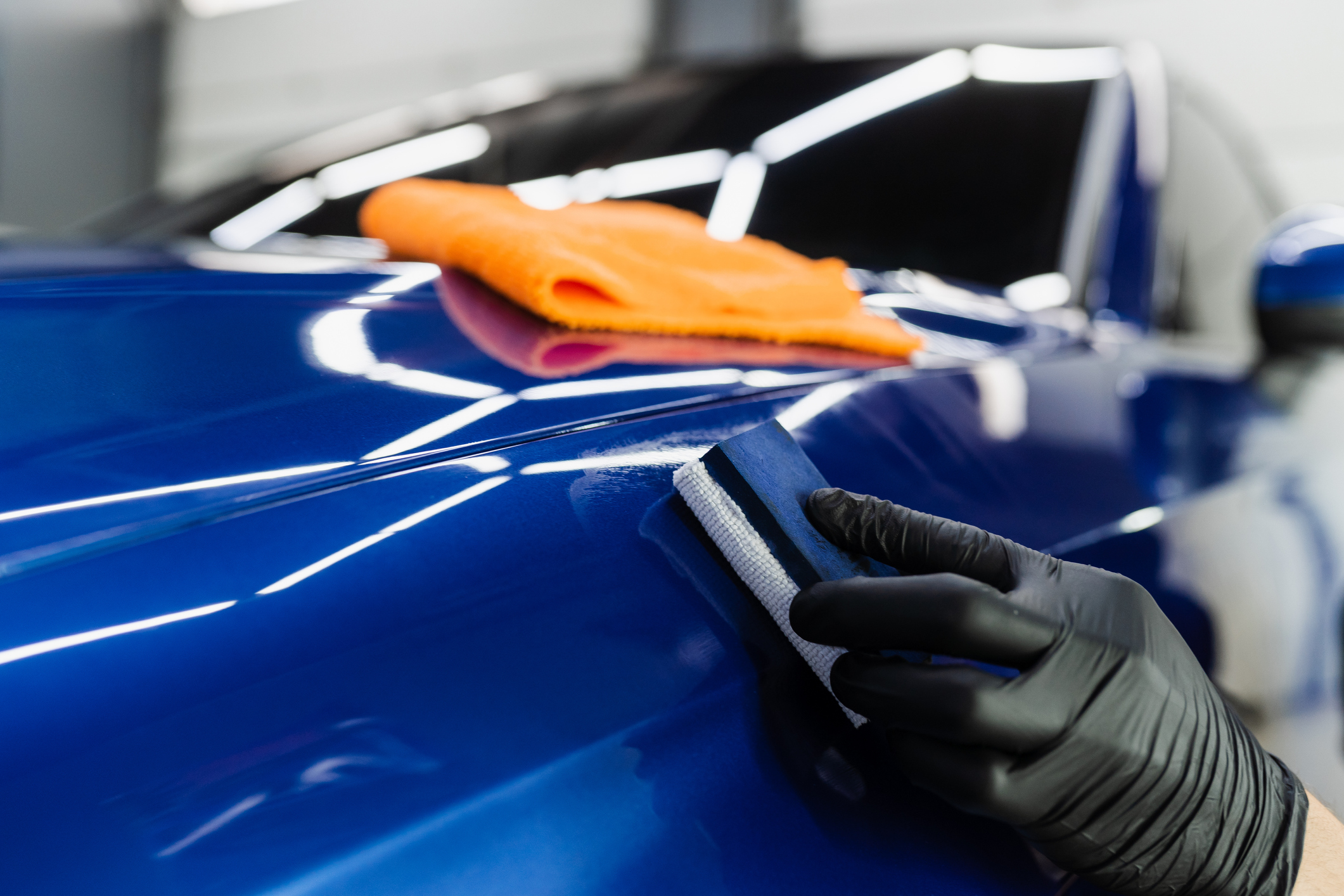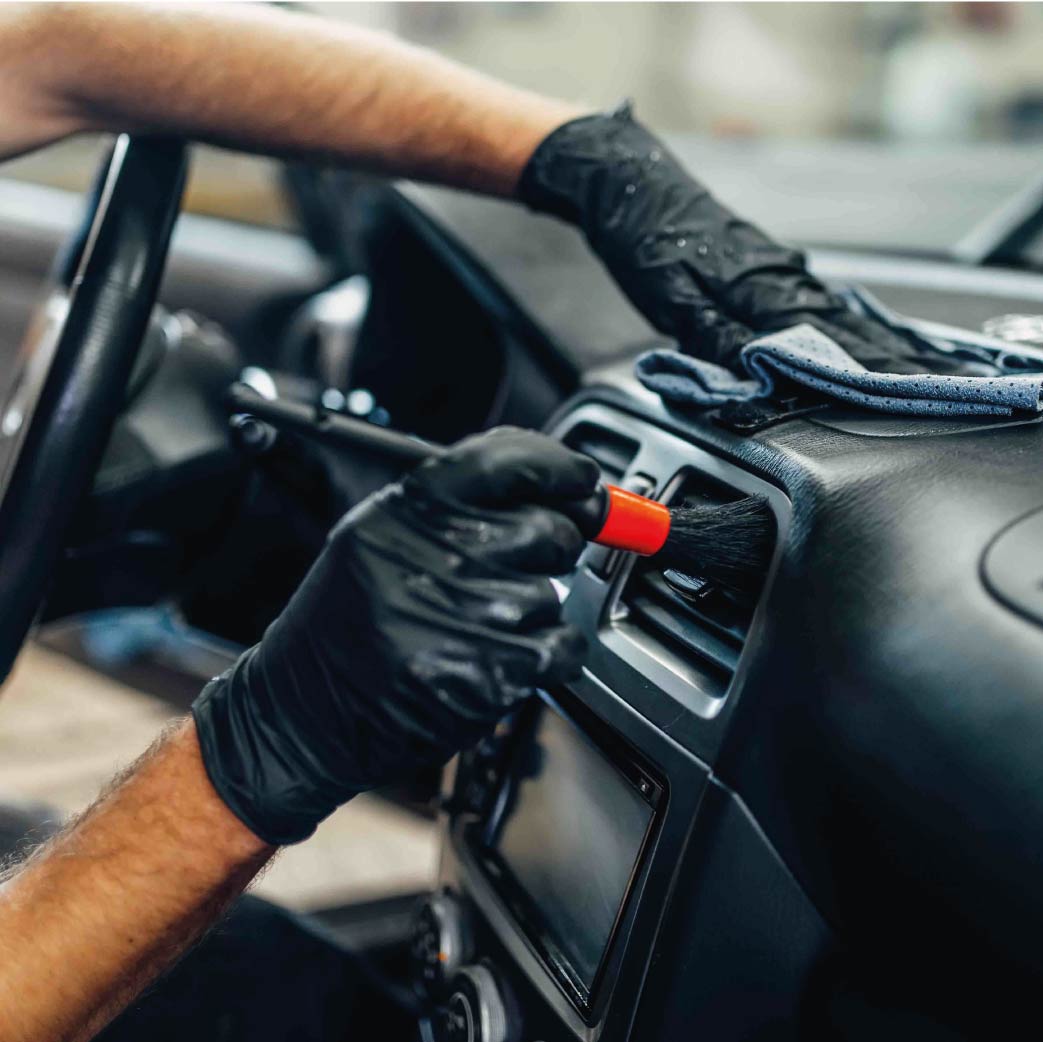Detail'd Luxury Detailing & Coatings Ceramic Coating for a Flawless, Durable Finish
Detail'd Luxury Detailing & Coatings Ceramic Coating for a Flawless, Durable Finish
Blog Article
Why Ceramic Covering Is the Ultimate Option for Durable Luster
In the world of automotive treatment, ceramic finish has actually emerged as a remarkable choice to typical shaving techniques, supplying unequaled long life and security for an automobile's surface. As we check out the elaborate benefits and mechanisms behind ceramic finishings, it becomes important to understand just how they redefine car maintenance and long life.

What Is Ceramic Layer?
Defining ceramic layer includes understanding its role as a protective layer for different surface areas, specifically in the vehicle market. Ceramic coating is a fluid polymer applied to the external surfaces of automobiles, developing a chemical bond with the manufacturing facility paint. This process results in a sturdy layer that enhances the vehicle's appearance while giving a powerful obstacle versus environmental pollutants.

Along with vehicle applications, ceramic coatings are likewise used in numerous industries, including aerospace, marine, and industrial sectors. Their adaptability enables security on surfaces such as glass, steel, and plastics. As an innovation, ceramic finish remains to develop, with innovations improving its longevity, hydrophobic homes, and resistance to scrapes and UV damage. This innovation strengthens ceramic covering's online reputation as a leading choice for surface defense.
Benefits of Ceramic Finish
Ceramic layer uses a wide range of benefits that dramatically enhance the longevity and look of automobile surface areas. Unlike typical waxes or sealers, ceramic coverings give a durable protective layer that can withstand harsh environmental problems, including UV rays, acid rainfall, and road grime.
Another key advantage is the hydrophobic home of ceramic coverings. This attribute creates water to bead up and roll off the surface, effectively minimizing water areas and reducing the build-up of dust and contaminants. Consequently, vehicles treated with ceramic coatings are simpler to clean, saving both time and effort for owners.
Additionally, ceramic finishes enhance the overall look of the vehicle by conveying a deep, glossy coating. This visual renovation not only elevates the car's look but can likewise enhance its resale worth, making it a smart financial investment for automobile enthusiasts. In general, the myriad benefits of ceramic finishing make it a perfect choice for any individual looking for to protect and preserve their vehicle's exterior in pristine condition.
Just How Ceramic Layer Works
The protective high qualities of ceramic coating come from its advanced chemical composition, mainly being composed of silicon dioxide (SiO2) When put on an automobile's surface, the finishing chemically bonds with the paint, creating a hydrophobic layer that wards off water, dirt, and various other impurities. This bond is achieved through a process called cross-linking, where SiO2 particles interconnect, forming a resilient and durable barrier that sticks strongly to the substratum.
Once healed, the ceramic coating improves the surface's hardness, supplying resistance versus scrapes and swirl marks. This safety layer also functions as a guard versus hazardous UV rays, which can create oxidation and fading over time. In addition, the coating's smooth coating decreases rubbing, making it simpler to clean the surface area while guaranteeing that crud and particles do not stick as quickly.
In addition, the longevity of ceramic coatings is a substantial benefit, with lots of formulas offering defense that can last for a number of years under appropriate maintenance. This mix of chemical bonding, hydrophobic properties, and UV resistance makes ceramic layer an efficient option for preserving the aesthetic charm and integrity of auto surfaces.
Comparing Ceramic Layer to Conventional Wax
Frequently overlooked, the contrast in between ceramic coating and traditional wax discloses substantial differences in resilience, maintenance, and defense. Traditional wax, while offering a momentary sparkle, commonly lasts just a couple of weeks to a few months before requiring reapplication. Its protection is limited, mostly securing against UV rays and light pollutants, but it can conveniently be washed away or weakened by ecological factors.
On the other hand, ceramic coating gives a durable and lasting obstacle that chemically bonds with the lorry's paint. This sophisticated innovation offers remarkable protection against severe environmental aspects, including acid rain, bird droppings, and road salts. Ceramic coverings can last a number of years, substantially reducing the regularity of upkeep and reapplication compared to wax.
Moreover, ceramic coatings show hydrophobic properties, enabling water and impurities to grain and slide off the surface better. This feature not just boosts the automobile's look however likewise that site makes cleansing much easier. In summary, while standard wax may be a cost-effective service for temporary sparkle, ceramic layer stands apart as the superior selection for those looking for resilient protection and convenience of upkeep.
Maintenance Tips for Porcelain Coated Cars
Maintaining the stability and appearance of a ceramic coated car needs certain treatment strategies to make certain the covering performs optimally over its lifespan - Detail'd Luxury Detailing & Coatings Ceramic Coating. Prevent automatic vehicle washes with extreme brushes that can damage the finish.
After cleaning, their explanation constantly completely dry the car with a soft microfiber towel to avoid water spots. It is also suggested to apply a ceramic-safe drying out help to enhance luster and add a layer of protection.
For optimal maintenance, consider performing a maintenance clean every 2 to 3 weeks and a detailed detail every 6 months. In addition, prevent using unpleasant cleansing items or tools that may jeopardize the ceramic layer.
If small flaws arise, light polishing with an appropriate item can help bring back the layer's integrity. Applying a ceramic layer booster every couple of months can renew the surface and extend the performance of the initial application. By adhering to these maintenance tips, owners can take pleasure in the lasting advantages of their ceramic layered cars.

Final Thought
Finally, ceramic finishing becomes the remarkable choice for achieving and maintaining a lasting sparkle on vehicles. Detail'd Luxury Detailing & Coatings Ceramic Coating. Its unique chemical bonding with paint, combined with hydrophobic residential properties, provides extraordinary protection against ecological impurities and UV damage. This ingenious option not only boosts the visual appeal of vehicles but likewise decreases upkeep initiatives, making it a rewarding financial investment for auto owners. The benefits of this content ceramic finishing plainly develop its supremacy over traditional wax options in automotive care.
In the world of automotive treatment, ceramic layer has emerged as an exceptional option to typical waxing approaches, providing exceptional long life and security for a lorry's surface. As we check out the detailed advantages and systems behind ceramic coatings, it comes to be essential to understand just how they redefine vehicle upkeep and durability. Ceramic layer is a fluid polymer applied to the exterior surface areas of automobiles, developing a chemical bond with the factory paint.Ceramic covering supplies a wide range of advantages that considerably improve the durability and appearance of car surfaces.Additionally, ceramic finishes boost the total appearance of the automobile by conveying a deep, shiny surface.
Report this page